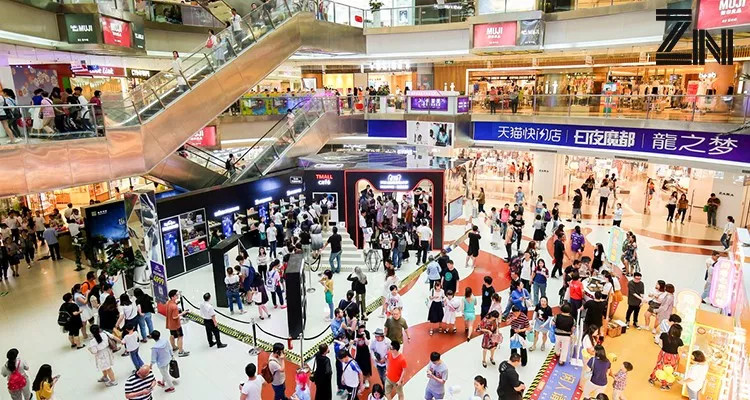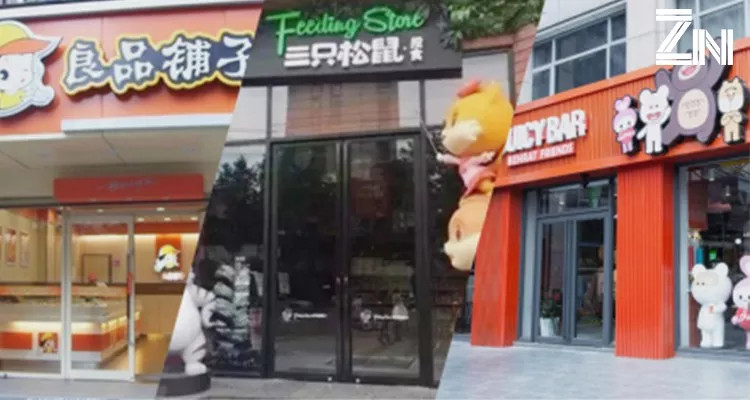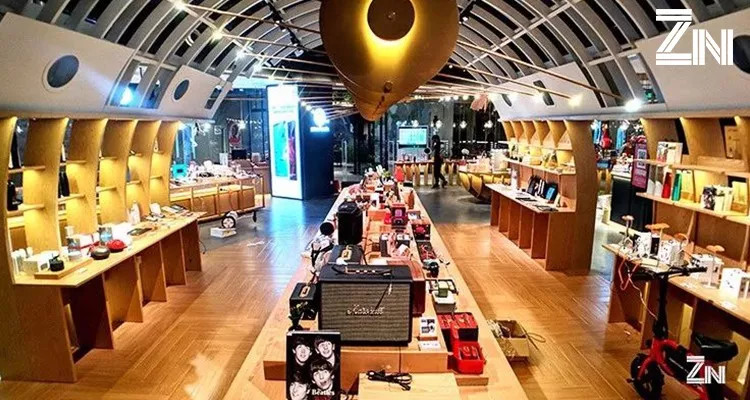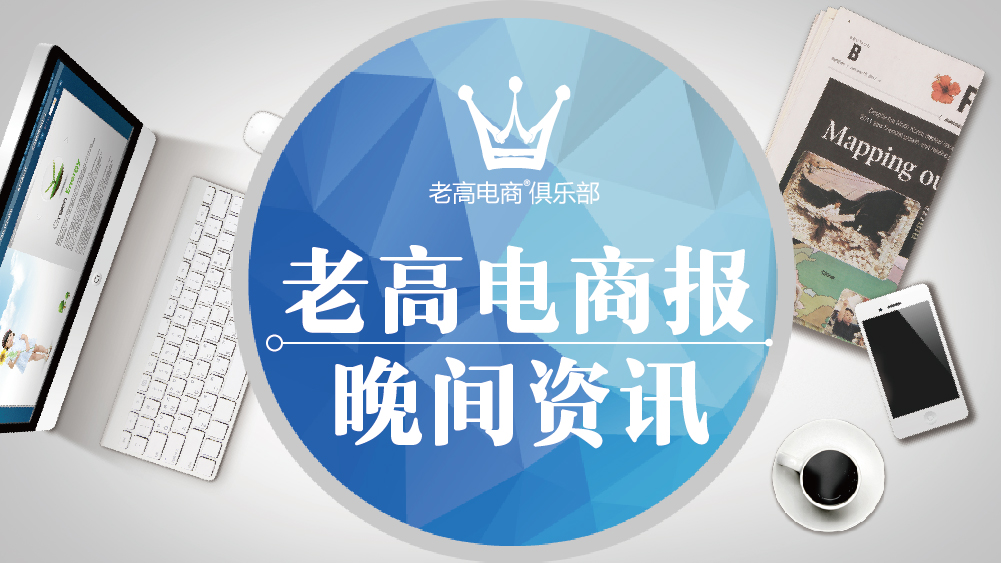The just-concluded "Mid-Year 618 Big Promotion", if it was called the "festival-making culture" of e-commerce in the past, it might be renamed "New Retail Carnival Day".
The performance data given by JD.com is that the cumulative order amount exceeds 159.2 billion yuan, of which more than 90% of self-operated orders are delivered on the same day or the next day.
Tmall expects that about 70 million people will participate in offline activities on June 18, and more than 70 new retail malls, 100,000 smart stores, and stores across the country of Intime, Hema and RT-Mart all participated in the 618 carnival.

Suning's performance has also been impressive since the Crazy E-commerce Festival became a new retail carnival. Since the outbreak of the offline 608 promotion, Suning's smart retail format sales have increased by 30% year-on-year, and the total order volume has increased by 24% year-on-year. 5,000 offline stores have become one of the important battlefields for the 618 traffic.
It is not difficult to find that "big integration of online and offline" has become one of the biggest highlights of this year's "Mid-Year 618 Big Promotion".
"Online and offline enterprises join forces to meet consumers through diversified operating models, becoming a common choice for e-commerce platforms and brand merchants to explore user value."
So it is not surprising that whether it is Alibaba's "new retail", JD's "boundary-free retail", or Tencent's "smart retail", major giants have seized the opportunity of new retail, trying to connect online and offline, and realize digitalization and informatization.
In just less than two years, new retail has been launched from the hot spots to "Hema Fresh", "Tmall Shop", "Suning Shop", and "Missue Youxian" at your doorstep...
Five guests of the roundtable forum, however, from "people, goods, and places" to "production, sales, and inventory", is the emergence of new retail a breakthrough due to the weak growth of e-commerce, and the breakthrough of offline counterattacks, or is the traditional retail a battle under the pressure of e-commerce?
On June 15, Zinc Finance held an offline event of "New Retail, from "Fengkou" to "Door to Home". The six guests shared some insights about new retail with everyone from single products, to scenes, to technology, to platforms, and then to mini programs and other infrastructures.
1. The opportunities for super items are getting fewer and fewer
"The channels and user habits have changed. In the era of super single products, opportunities are getting fewer and fewer," Sumu, CEO of emerging baking brand Akoko, put forward this view.

Sumu emphasized the "net sense". Take consumer products as an example. First-generation brands such as Wahaha and Unified are heading for obvious decline. Wahaha's last hit item should be traced back to the "Nutrition Express". However, that was already 10 years ago, Sumu recalled.
The reason is that the rise of e-commerce has not only changed the consumption model, but also changed sales channels and promotion strategies. The traditional agency mechanism promoted by provinces, cities, districts and counties at all levels is no longer able to meet the more refined control of new retail.
However, second-generation Internet brands such as Three Squirrels, Liangpinpuzi, Baicaowei, etc., which have risen with Taobao dividends, play the role of "reapers" in the new retail era.

Take the second-generation Internet brand as an example. In October last year, the IPO review resumed, and its performance growth rate also accelerated significantly. The net profit in the first half of 2017 was 241 million yuan, which exceeded its net profit of 237 million yuan for the whole year last year.
As its scale continues to expand, these second-generation Internet brands seem to be no longer so "friendly" to new entrepreneurs, especially when new brands appear in sub-sectors, such brands will be harvested at a low price of 40% to 50%.
So we will see that many brands are rising rapidly, fighting under the storm, and then disappearing, some people make profits and leave, and some people lose all the money.
The third-generation brand represented by AKOKO relies on new retail channels and KOL channels to open up channels through content and horizontally, penetrate the brand's mind into the customer base, rather than relying on the ultimate control of the shelf like the first-generation brand. In this process, building a sales and brand building path with the human-social relationship chain as the core has become an opportunity for the third generation of brands to win.
Akoko's product display has accompanied the new retail era, and the channels and scenarios of products are more diversified, flexible and dynamically evolved. It is a kind of "cell-type shelf control of retail single products", Sumu used this example.
At the same time, consumption scenarios are also rapidly evolving and upgrading, and they are conquering and permeating every business field with a strong momentum, with appearance, service and technology indispensable. Consumers not only buy products, but also include more dimensions and deeper added value such as experience, feelings, and atmosphere creation.
2. The rise of scene and space design
"HaiLan Home is great, but it only takes twice a year, and we have achieved four times as much as it is," Li Xiaopeng, CEO of Qike Bus, told Zinc Finance Pan Yuefei that last year, the arrival rate of Qike Bus members was about 8 times, and the average stay time was 16 minutes, with a square meter efficiency higher than that of fast fashion H&M and ZARA.
In Li Xiaopeng's view, the market for new technology products has not been opened, and new retail is not only about selling goods, but also about the interactive experience between users and new products. Even if customers do not buy things in the store, even if the children brought by customers often destroy or even break the robot's head, they will still be happy because technology has changed the user's cognition.
Users' reaction at Qike Bus "Although all the logic of all offline stores is established around the turnover of goods and goods, and its marketing is also aimed at selling goods, making single products with higher profits the only way to operate, but through low gross profit margin products and increasing sensory experiences such as hearing, smell, and even taste, reducing interference from sales personnel, these are the experiences that new retail needs to bring to customers," said Li Xiaopeng.
Taking the flagship store of 420 square meters of Qike Bus in Shanghai Changfeng Joy City as an example, in addition to experiencing immersive experiences of DJI drones, VR helmets, smart speakers, motorcycles and other trendy technology products, you will also see beautiful and interesting objects such as electric toothbrushes, facial cleansers, and artistic sand paintings.

The display product operation experience of Qike Bus flagship store is the core, service and interaction have become incremental, and space experience is becoming the basis of this type of store. This is not the case with the popularity of Xixi Fo Bookstore.
How to increase the interaction between customers and stores, how to transform the scene and add more experience, these are not only the problems that all new retail offline scenarios need to face, but also the dividends given by the times.
3. The dividends are always new, the key depends on whether you can grasp them.
"Through the earlier wave of cross-border dividends, we have developed more than 10,000 maternal and child stores in one year," said Xu Hong, COO of Haipaike.
Unlike Sumu's expression with a slight brand sentiment, Xu Hong's twelve years of experience in Alibaba and the management experience of the Haipaike's Thousand-person sales team has a unique style and has gained a lot of fans on the spot. The four words she often talks about are "giving an example."
Haipaike has gone from online to offline. "For example, for example, all e-commerce companies, including large supermarkets, are value harvesting groups for mature brands, while all offline small and medium-sized stores and food stores are sowers and cultivators of the brand," she gave an example. For example, Kao Diapers, if it is placed on Tmall and JD.com, as long as the price is 5 yuan, it will definitely be sold out, but the other way around is different.
If it is a startup or unknown brand, even if it is a 50% discount, it will still not be sold, Xu Hong added. No consumer will search for such a product on the platform, nor will consumers buy products without brand awareness because of designing more beautiful details pages.
What Haipaikes are gaining is the policy dividend of cross-border goods, while Akoko is gaining is the traffic dividend.
Changes in user behavior habits, whether from WeChat Moments, to top new media cooperation tweets, to Toutiao’s direct jump to Tmall to achieve a big explosion, and to the first wave of marketing in TikTok, Akoko’s reaction is always accurate and agile.
"If you get the 20 top internet celebrities on Douyin, you will cover almost all the people in China," Su Mu explained, which is the same as the centralized communication of CCTV advertising in the early stage.
Starting from April this year, Akoko has begun to counterattack offline, taking new retail channels such as Hema Fresh, Super Species and Convenience Bee, and constantly expanding its traffic sources.
With the changes in the communication mechanism, different channels have begun to have their own functions, such as Zhihu doing Q&A, Douban doing topics, Toutiao doing traffic diversion, and Douyin using it to plant grass.
"Although users are scattered everywhere, the potential energy of brands and products can be achieved," Sumu shared that the company can still invest in the lowest diamond exhibition and direct trains on Tmall.
The short video dividend not only helps internet celebrities, but in fact, Tmall is no longer the Tmall that year.
The promotion cost of each trading customer for the Diamond Exhibition Express was about 10 cents. Now the cost of a single click is as high as 3-4 yuan, and the final transaction customer is about 85 yuan.
Building high walls, accumulating grain, and slowly becoming king. With the gradual disappearance of mobile Internet traffic, in the new retail era, the next wave of dividends may come from the differentiation between online and offline.
4. Platform, online sales and offline empowerment
"Oh my God, how to do this business, it's only a few million a day," Xu Hong recalled the numbers scrolling on the big screen every day, which made her, a senior operation in Alibaba who watched billions of numbers every day, was helpless, but at present, Haipaike has become a large platform for maternal and infant stores covering 16 provinces across the country and covering 100,000 stores.
Xu Hong tells a story about the founder Zhao Chen, the founder of Haipaike at the beginning of its establishment.
At that time, Zhao Chen treated himself as a local push and went offline to maternal and infant supermarkets all day long, talking about models and cooperation. After many days, one of them finally refused.
In the next three days, Zhao Chen has been doing activities, attracting traffic and selling goods in this store. Zhao Chen was very disappointed because in the past three days, not only has the abortion in the store been sparse, but he has only sold more than 50 cans of milk powder.
Informatization and dataization have become the foundation, he thought that this cooperation may be ruined, and the boss will definitely be unsatisfied.
But unexpectedly, the boss was ecstatic after learning the data and had never done such an effective offline activity, so he immediately decided to cooperate.
"The rhythms of online and offline are different," Xu Hong added. It took Haipaike three years to change the usage habits of traditional store operators, such as ordering APP instead of business cards in drawers, product selection replaced recommendations, immediate payment replaced 2-4 weeks of accounting period, and even if the goods are damaged, you need to contact customer service yourself.
Entering an industry and changing an industry is a gradual process that requires time to accumulate. However, "must follow the trend", Xu Hong emphasized this.
Now Haipaike has become a platform connecting 100,000 stores and brands, empowering brands and stores.
"From connecting aggregation, then upstream brands, and then downstream to our own stores, this path is relatively smooth," Xu Hong shared.
Reprinted, the standards of "new retail" are connected first and then empowered, which is similar to what unmanned retail does.
5. Technology, from cold to warm
Unlike Haipaike, Guo Xiaoqi is targeting nearly 7 million small and medium-sized supermarkets across the country, represented by husband-and-wife stores, community convenience stores and Hualian small supermarkets with yellow-bottomed and blue characters.
Such small and medium-sized supermarkets have far less product profit than maternal and infant supermarket stores. "The cost of RFID is between 30 cents and 70 cents, which is a cost that a single product of small and medium-sized supermarkets cannot afford," Wan Xiaoli explained. Talking about the supply chain is too complicated and talking about technology is too luxurious, but it is better to use economic benefits to enter.
Unmanned retail is not as good as smart retail. "Industry standard solution. Taking RFID as an example, the entire transformation cost is about 200,000, and ours is about 50,000-60,000," Wan Xiaoli added that Guo Xiaoqi's visual code chip has the lowest cost of only 10 cents. Next month, we will also launch the latest smart cabinet based on visual codes.
From a model perspective, first, smart containers and smart retail stores are aimed at incremental markets such as apartments and communities; second, they are upgraded through the "store-in-store" transformation model (not only renovates some areas in the store to become unmanned retail).
New technologies bring new opportunities According to data from Guo Xiaoqi's current pilot program in apartments, the daily consumption of small brand apartments with 91 people can reach about 1,000 yuan, and the per capita unit price is also above 10 yuan. Including equipment depreciation and rental costs, it is expected to achieve a recovery of about 6 months.
Smart retail can also solve theft problem.
"The amount involved in the case of 105 yuan was caught in half an hour," Wan Xiaoli took theft that Guo Xiaoqi system helped the public security to crack on May 29 this year as an example. In just half an hour, with the help of the information of scanning the QR code to pay, the public security quickly locked the suspect.
This is naturally attributed to the innovation and transformation of retail stores through technology's Internetization, dataization and informatization. For example, ten years ago, there was a free wifi place to eat, and we would be new for a long time. However, ten years later, if you cannot pay on WeChat or Alipay, you may not be willing to go to this store for a second time.
In addition to technology, the infrastructure represented by mini programs also brings us more convenience.










 EN
EN CN
CN
